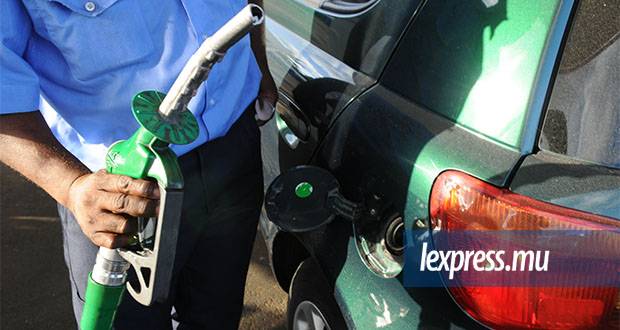Publicité
Electric Vehicle Mobility - The stakes for Government & CEB
Par
Partager cet article
Electric Vehicle Mobility - The stakes for Government & CEB

What could well explain the resolute efforts of developed countries to push for electric vehicle mobility? Countries like France are banning sale of petrol, diesel and hybrid cars within the next 20 years, UK envisaging same in 15 years, Netherlands in 10 years and Norway in next four years.
Electric Vehicles (EVs) is ushering an upheaval in transport mobility, opening new services, and triggering new thoughts in the energy field.
In this paper, we discuss the eventual stake for the government here in Mauritius and for the CEB. In two subsequent papers, we consider the issues surrounding electric cars and electric buses.
We first look at three drivers that impel countries towards electric vehicle mobility.
Greenhouse gas and air pollution
Exhaust pipe emissions of internal combustion engine vehicles (ICEVs) have mainly two dimensions, Carbon Dioxide (CO2) and Pollutants.
CO2 is a main constituent of the Greenhouse gases (GHG) that lead to global warming and climate change. Following the Paris Climate deal, countries, including Mauritius, have committed to reduce CO2 emissions and thus engage in decarbonisation strategies. GHG emission from the transport sector in Mauritius is reportedly growing at 3.3% annually.
An equal concern are the pollutants from the ICEVs exhausts. These include carbon monoxide, hydrocarbons, nitrogen oxides and particulate matter. This raises issues of air quality and public health concern. Worryingly, based on the pollutants level of some years back, WHO estimated that in Mauritius, outdoor air pollution causes 100 premature deaths annually.
The development of low-carbon and zero-emission transport of which EVs form part has become a priority for several countries.
The technology and digitalisation push
Developed countries facing a declining automotive industry have found in the transformation towards EVs, an opportunity to regalvanise the industry, developing new opportunities and creating new job types. China, the biggest producer of EVs, perceives a new and vast commercial opportunity.
Western countries invest heavily in the R&D for EVs. USA is funding plans for “next generation electric vehicles”. Research has amplified on hydrogen fuel cell for vehicles. Today all large vehicle manufacturers have EVs in their offerings.
Developed countries are having to increase diffusion of digital technologies to satisfy a changing lifestyle of the young generation. Increasingly, their urban young adults no longer see cars as a priority acquisition. Connected vehicles with satellite-assisted navigation garner more enthusiasm. EVs being all electronics, lend themselves to the digitalisation world of Uber type car hire, ride sharing (auto-partage), carpooling (co-voiturage) and bicycle or parking sharing.
Planning for Energy Security
Energy security makes a more compelling claim for EVs. Countries foresee a looming catastrophic threat of oil supply shortages and price disruptions in the coming years.
Fossil fuel is a finite resource that would eventually face shortages. For a country where the mobility systems are mostly ICEVs and therefore heavily dependent on gasoline and diesel, the disruptions could eventually lead to social disturbances and upheavals among the population. Thus, the reasoning to move to EVs.
EVs do not use gasoline and diesel and are thus CHG and pollution free. However, EVs batteries are generally charged deriving electricity from the national grid, much like the CEB. If in turn that electricity is produced from fossil fuel, as coal and oil in the case of CEB, then CHG and pollution would still be prevalent at the production level. This nullifies the decarbonisation effect of EVs. Coal and oil are imported and thus place Mauritius in an energy security risk.
To allay such risks, countries are feverishly diversifying their energy mix for producing electricity away from fossil fuel into renewable and cleaner energy. UK for example still has 39% fossil fuel in its energy mix, France only 13%. Fossil fuel in the Mauritius energy mix is 79 %.
The Electric Mobility Ecosystem
In use, EVs have zero carbon and zero pollutants, reduced noise, and absence of vibrations. Their automatic transmission leads to driving simplicity and have particularly excellent acceleration performance.
A distinctive feature is the battery. It powers the drivetrain of the vehicle. This raises two issues, the cost and the range. The lithium-ion battery mostly used are quite expensive pushing up significantly the cost of EVs. Fortunately, the price is continuously falling. The range of the battery should not be an issue in the country. The autonomy of typical electric cars battery ranges from a minimum of 125 km.
The EVs are typically charged at night with the provided plug in at home, taking some 4 to 8 hours depending on the remaining charge in the battery. An accelerated charger, purchased separately, allows full charge generally in one hour. Th eco system also comprises user’s own generation of energy notably through solar and wind sources.
The cost of purchase of an EV is currently on the high side. However, the running cost is much lower than for an ICEV. It could be lower still if the CEB provides special tariff as part of an EV deployment scheme.
The stakes for the Country
Should Mauritius pursue an electromobility ecosystem?
First, Mauritius is committed along with the world communities towards decarbonisation strategies. Second, as importantly, the country needs to assure its energy security to prevent future economic and social disruptions. Third, the country cannot ignore the new mobility technological and digitalisation advances taking place in the outside world.
Consequently, the country would gain much in embracing a policy that bolsters the utilisation of EVs. And this despite such a policy representing a long term, onerous and non-reversible investment for the public authorities.
In the main, consumers may still be oblivious of the larger carbonisation stakes. Nor willing to bear the cost of economic and social benefits not accruing to them immediately. This consequently need a policy to improve consumers’ EVs acceptance.
The deployment of electromobility raises a lot of challenges for the government and the CEB as main actors. What would the typical measures that could be taken?
The stakes for the Government
Increased renewable energies
A policy to introduce EVs must be in synergy with significant and decisive improvement in the energy mix of the country towards increased renewable energies. The Mauritius Long-Term Energy Strategy Plan 2009–2025 aimed to increase renewable energy (RE) share in the electricity mix to 35% by 2025. The RE share is currently at 21%. A new Renewable Energy Roadmap 2030 launched in August last year now places the RE share at 40% by year 2030.
Purchase Subsidy & Tax Exemptions
Countries have introduced forceful financial incentives at least in the initial years. Financial incentives towards EVs, Charging equipment, Renewable Energy Generation equipment would include purchase subsidies, duty and tax exemptions, tax deductions, free or cheaper road tax. France has this year revisited its offers and introduced a direct subsidy of €6,000 on EVs price of up to €45,000 with a view to increase fivefold such sale within the next two years. Norway offers tax credits and direct subsidies. The Netherlands has frozen road tax for five years for new EVs. Some four weeks back, the Delhi Government announced capital subsidies of INR 150,000 with no registration fees nor road tax payments on new EVs. Similar type incentives are also offered on two wheelers and commercial EVs.
For businesses, offers include exemption from corporate vehicle taxes and depreciation deduction incentives.
Conversion Allowance
Schemes such as “Prime à la Conversion” (France) or “Cash for Clunkers” (USA) have been put forward to entice people to scrap their ICEVs for new EVs.
Free Parking & Free Charging
Several countries have also introduced for EVs, free parking on street and at public buildings, with free charging.
Buildings Regulations enforcement
New Building Regulations are being set for new office, commercial and residential buildings making it compulsory to make provision or to set up charging outlets for EVs for a defined percentage of planned parking spaces. Commercial premises are as well given incentives to install pay for use charging outlets in their parking lots.
Carbon tax
In addition to spending on incentives for EVs, the state would also face declining revenue from the current petrol taxes as the use of EVs increases. To make up for these, countries have introduced a carbon tax, very much like the French “malus écologique”, an environment tax applicable to ICEVs with a certain level of CO2 emissions.
The stakes for the CEB
It is manifest that an expanded development of EVs in the country will hinge on the degree of preparation of the CEB.
First, a growth of EVs will inevitably lead to an increase in demand for electricity. This could require an optimum management of electricity demand initially, to be followed with stepped up production in a next phase.
Second, if electricity demand be increased on a localised basis, for example for a fleet of EVs, transformers could need to be replaced with more powerful ones. Would the cost, deemed quite significant, be borne by the user or the CEB?
Third, it is predictable that some EVs users would want to install individual solar power PV systems. PVs work mostly during daytime whilst EVs are generally charged at night. The electricity generated by the PV would be fed to the CEB grid and consumed again from the grid at a different time. CEB would increasingly need to handle the intermittencies in consumers producing electricity and could be required to invest in storage capacities.
Fourth, EVs users would habitually recharge their EVs immediately they reach home in the evening. At this time, (between 6pm and 10pm) there is a peak demand for electricity for households. A lower electricity rate at late nighttime would encourage users to program their EVs to get automatically charged at nonpeak timings.
It is thus expected that CEB’s functions and processes would be changed with an advent of EVs.
Conclusions
It looks that it may be imperative that the country follow in the footsteps of others and have a similarly convincing policy towards electromobility. A policy that could be grounded in the implementation of renewable energy sources, laying the grounds for an electromobility ecosystem and management of the consequent demand of the electricity grid.
Public policies are an indispensable support for the rise of the EV market in the initial phases. It would be quite costly for the public finance, but it is an investment for the future.
Publicité
Les plus récents






